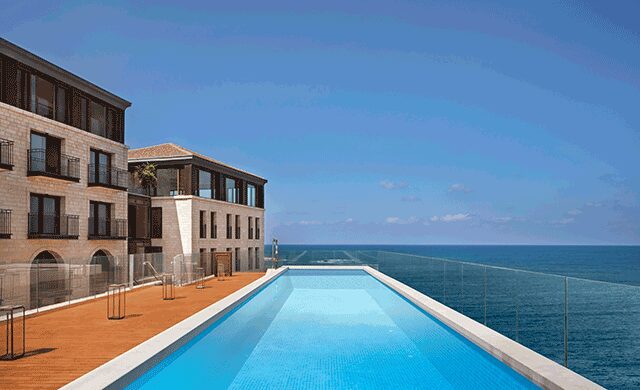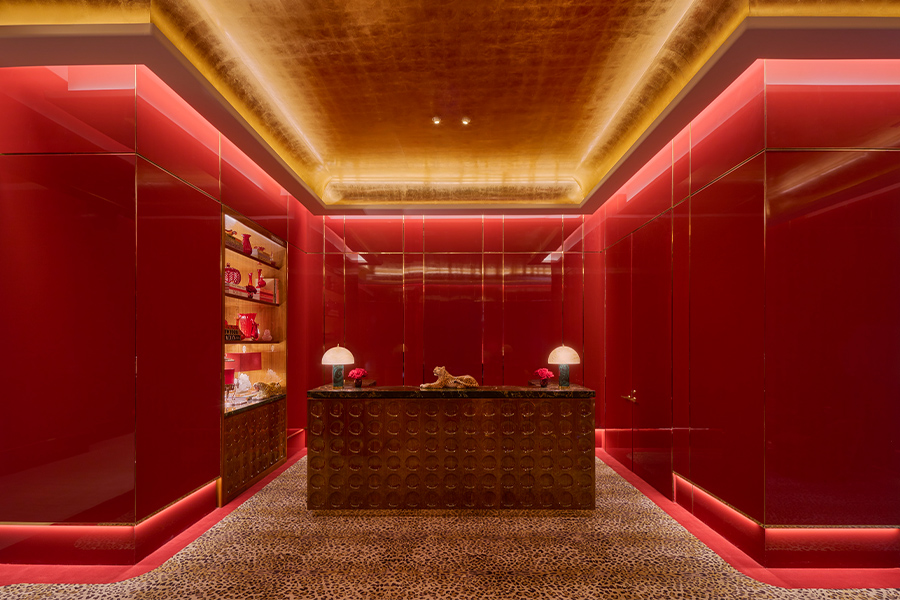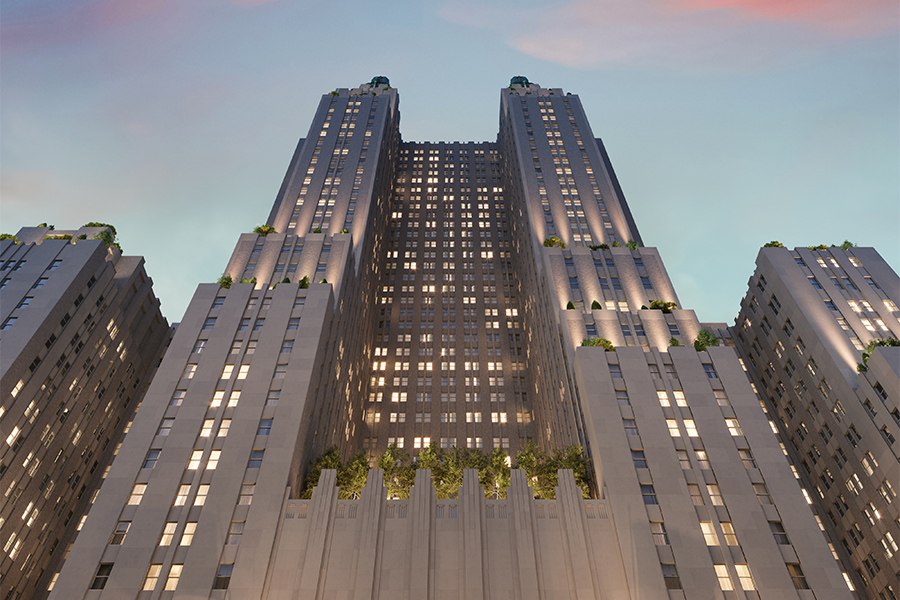Design and architecture firms: ARA Design, London; Baranowitz + Kronenberg, Tel Aviv; and Feigin Architects, Ramat Gan, Israel
The details: The Setai Tel Aviv is a lesson in blending the old and the new. Housed within five former Ottoman buildings—originally constructed as a fortress during the 12th century and once home to a prison and a police station—the 120-room luxury hotel boasts original stone corridors, ironwork, cobblestone, and striking Crusader-era archways. Located in the city of Jaffa, itself about 3,000 years old, the London-based ARA Design was thoughtful when putting the ancient port city in dialogue with the cosmopolitan Tel Aviv, partly by blending colors and fabrics “reflective of Jaffa and its history,” says ARA lead designer Andrew Avidan. The lobby, for instance, features an archway donning the seal of Abdul Hamid II, 34th Sultan of the Ottoman Empire. Furnishings are also done in a simple palette of soft gray, black, and brown as to not distract from the building’s heritage. Meanwhile, in the spa, materials such as walnut, marble, and more stone connect to the original architecture while offering modern elements that create “an instantly calming feeling,” says Dana Leitersdorf, also a lead designer. Because Jaffa is a seaside town, the rooftop infinity pool doesn’t disappoint either, providing heady views of the Mediterranean.


In the neutral-toned guestrooms, textured headboards “feature geometric concepts that were popular throughout the buildings’ past lives,” Leitersdorf points out, with some rooms directed toward the sea and others glimpsing the city. Opening up to a tree-lined courtyard is restaurant Jaya from chef Adir Cohen with interiors that remain true to the hotel’s heritage, thanks to local studio Baranowitz + Kronenberg. Here, the firm chose custom Brazilian blue marble and cobalt blue chairs as welcome notes of color.
The Setai Tel Aviv

Photography by Assaf Pinchuk
Projects:
May 17, 2018


